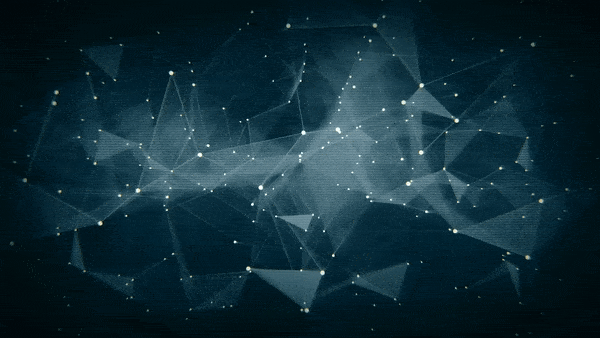“MWe” knew it! Neuroscience confirms: learning is about connecting the dots
Tom here, to share my thinking behind this bit of marginalia. Here’s what I wrote aside a paragraph on “active learning” in the new book, Uncommon Sense Teaching:
“You need to collect some dots before you can start connecting ideas!”
Ancient history
I started using the phrase “connecting the dots” way back in 2001 in describing my first solopreneur venture offering knowledge management consulting services to lawyers after “retiring” from my law practice. I liked the concept so much that it became the tagline for my first marketing blog, Knowledge Aforethought:
“Thinking about how legal knowledge workers collect, and then connect, the dots.”
In the opening blog post in December 2003, I wrote:
[For the complete quote from Steve Jobs that Bennis used, see this blog post collecting “Jobs-isms”.]“Creative problem solving is often described as ‘connecting the dots’ and I like that image so much it’s the basis for my company logo. But, as Warren Bennis pointed out in Organizing Genius, the best creative problem solvers have accumulated ‘a vast number of experiential dots to connect.’ “
Grammarist traces the use of the phrase in this sense to the turn of the twentieth century, when children’s puzzles requiring them to draw lines connecting numbered dots to form pictures became popular.
But of course, the human inclination to connect “dots” to form meaningful patterns goes back much further. The IAU (International Astronomical Union) pegs the earliest known example as cave art at Lascaux in France dating back some 17,300 years, depicting the Pleiades star cluster.
From stars to dots to neurons
Coming full circle, recent neuroscience confirms that the phrase is pretty much what goes on in your brain when you learn new things and think creative thoughts.
That note I wrote in the margin was triggered by this text, describing recent findings to explain why we need to collect a foundation of basic information before we can form the conceptual understandings needed for more advanced learning and creative problem solving:
“Because neuroscience shows us that for successful learning, students often need to have essential, but sometimes seemingly trivial, information in long-term memory, including definitions and examples. These neural links [i.e., dots] serve as a foundation for conceptual understanding and a springboard for creative thinking.”
Natalie Wexler puts it a bit more colorfully in her book, The Knowledge Gap:
“It’s not so much that particular bits of information are vital in and of themselves — although some certainly are. It’s more that people need to have enough facts in their heads to have … ‘a knowledge party’ — a bunch of accumulated associations [i.e., dots] that will enable them to absorb, retain, and analyze new information.”
Maybe you’re thinking you’re all grown up and don’t need to worry so much about collecting more dots, more basic information to connect with what you already “know”? Can you hear me gasp?
Now that I have my breath back, I’ll close my case with a couple of quotes from one of my favorite brain-building resources, Maria Popova’s Brain Pickings blog. The first comes from a post built around a video of Amanda Palmer’s keynote addressing the human urge to connect the dots and share the connections we’ve made. The video deserves your time, but here’s the line that captures my point:
“We can only connect the dots that we collect …”
Can any of us claim to have all the dots we’ll ever need to keep learning, creating, and solving the next problem we face?
The second post addresses this in its title, “Why Dot-Connecting Is the Key to Creativity” and offers these two observations in support:
“Originality often consists in linking up ideas whose connection was not previously suspected.”
— Steven Gould
“The role of the imagination is to create new meanings and to discover connections that, even if obvious, seem to escape detection.”
— Paul Rand
So I ask again, can we ever stop collecting dots to make those new connections?
What about Mwe?
From the preface to my book, Read ‘Em & Reap:
[The preface is included in our free sample pages, available here.]“The term “MWe” comes from Daniel Siegel’s Mind: A Journey to the Heart of Being Human. His exploratory journey ranges across many scientific fields including neurobiology, anthropology, quantum physics, and complex systems theory. He carefully builds his case for concluding that our minds are more than enskulled brain activity, more than embodied nervous system impulses flowing within us.”
Siegel suggests that our minds are just that: our minds. He’s a leading thinker in the field of “interpersonal neurobiology” and
“he proposes a broader working definition of mind as:
‘an embodied and relational process that regulates the flow
of energy and information’ both within and between us.”
As I noted in my book, this idea of connecting dots with other minds is supported by others in science. I cited Dr. Dana Suskind’s example in her book, Thirty Million Words: Building a Child’s Brain:
“The brain may be brilliant, but … it’s a social creature. … It does not learn language passively, but only in an environment of social responsiveness and social interaction.”
Another recent research paper reminds me of the study group I joined the first week of law school and relied on heavily throughout. We sometimes commented how our weekly sessions, which often ran well beyond the scheduled hour, made each of us “smarter.” Now, almost fifty years later, the research suggests we were right!
The researchers compared a team-based learning (TBL) approach to individuals engaged in active learning (recall that’s what prompted my marginal note that led us here). Active learning means putting the information you’re studying to use, retrieving it from memory, connecting it to prior knowledge. The researchers began by noting that active learning has been shown repeatedly to improve student success over older methods, such as lectures or passive reading.
But their new studies with hundreds of participants showed that teams of 5-7 students did even better. Among the reasons identified were “increase student accountability, motivation, and engagement with course content” due to the group dynamics of small teams.
How many new dots have you collected recently?
And how can we work together to help each other connect them?






1 Comment
Leave your reply.